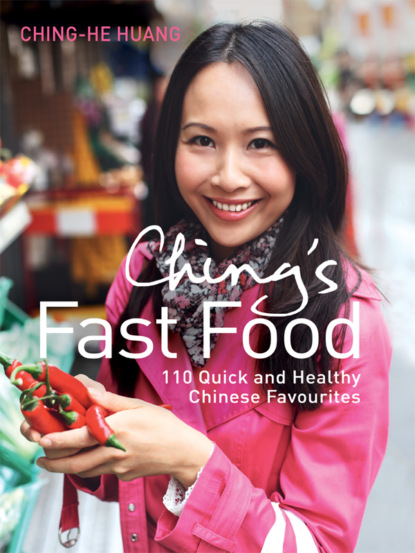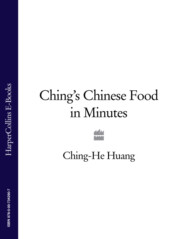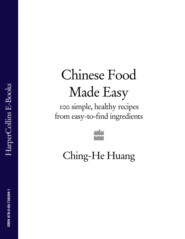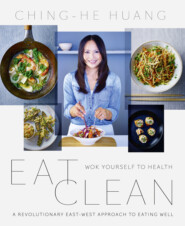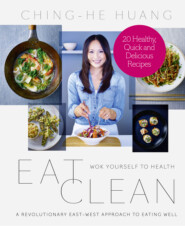По всем вопросам обращайтесь на: info@litportal.ru
(©) 2003-2024.
✖
Ching’s Fast Food: 110 Quick and Healthy Chinese Favourites
Настройки чтения
Размер шрифта
Высота строк
Поля
With this book, I want to give you my 21st-century version of the Chinese takeaway, inspired by this favourite fast food. I want to demonstrate how I think Chinese takeaway dishes should be cooked at home. I will look at all the offerings, whether healthy or unhealthy, give my view on them, share tips with you and show you lots of easy recipes that can be cooked far more quickly than it would take you to order your favourite takeaway dish. I will share with you my knowledge of flavour pairings to get the best out of your Chinese store cupboard (see the box above for my top ten ingredients) and introduce some new ways of eating and cooking Chinese food. In addition, I want to show you how Chinese takeaway dishes, when cooked with the freshest ingredients you can lay your hands on (coupled with the right culinary techniques), is a far superior ‘fast food’ than any other cuisine in the world. If I owned a takeaway, the dishes in this book are the ones you’d find on my menu.
Enough said. Less talk and more cooking!
MY TOP TEN ESSENTIAL CHINESE STORE-CUPBOARD INGREDIENTS:
1. Light soy sauce
2. Dark soy sauce
3. Shaohsing rice wine
4. Toasted sesame oil
5. Five-spice powder
6. Sichuan peppercorns
7. Chinkiang black rice vinegar
8. Clear rice vinegar
9. Chilli bean sauce
10. Chilli sauce
Breakfast
When I first arrived in South Africa, I was five and a half. After a tearful goodbye to the rest of the family, my mother, brother and I packed our bags to join my father, who had already left to set up a bicycle business in South Africa. In Taiwan he had been working as a manager in a building company and hated his job. So when by chance he met Robert (‘Uncle Robert’ to us) and the South African convinced my father to set up in business with him, he jumped at the idea. We liked Uncle Robert: we had met him only once, but he had taken us to a pizza restaurant and given me a cuddly racoon toy from South Africa. Despite no previous business experience and not knowing a word of English, my father moved us all over there on a whim. It was to be one of the scariest but most fulfilling adventures of my childhood.
At Uncle Robert’s insistence, we stayed on his farm just outside Jo’burg. He and his wife Susan accommodated us in a converted barn on their plot of land, which extended for acres and acres. They even had a mini reservoir with their own supply of water and they kept horses and several Rhodesian Ridgebacks. Aunty Susan was a welcoming lady. The day we arrived, while my mother was unpacking and tidying up the barn, she took us food shopping. My brother and I were taken to the most enormous building we had ever seen. It was a hypermarket. Back in Taiwan, I hadn’t even been to a supermarket before. Even in Taipei, the only modern outlets we had were 7-Eleven convenience stores. The only place like it in our experience was the local wet market my grandmother used to take us to in the village, so this vast building was a shock.
My brother and I went up and down the aisles, admiring the rows and rows of packaged ingredients. There were even fish tanks with fresh lobsters and crabs. Aunty Susan guided us to a large chilled section; I remember feeling really cold. She pointed to the shelves and gestured to us to pick something, so I picked a small light brown carton and my brother picked a dark brown one. We hadn’t a clue what we had chosen. The rest of that shopping trip is now hazy, although I remember plenty of boxes and paper bags being carted to Aunty Susan’s large fancy kitchen.
She handed us each a teaspoon and we left her to her unpacking. I opened the foil lid of my carton and took a small mouthful, and my brother did the same. The taste was creamy and sour but also sweet; I had no idea that I had picked a caramel-flavoured yoghurt and my brother a chocolate one. We were used to our Yakult, but this was an entirely new experience. We weren’t sure we liked it, but we went back to the barn and showed the yoghurts to Mum. She took a small mouthful and then spat it out: ‘Pai kee yah!’ (‘It’s gone off!’ in Taiwanese). She stormed over to Aunty Susan’s and started ‘communicating’ with her. They couldn’t understand what each other were saying; in the end my mum threw the pots in the bin! Aunty Susan looked bewildered and shrugged her shoulders. I thought Mum was rude, but I didn’t dare say anything. The next day Aunty Susan dropped by as Mum was making us fried eggs for breakfast. She brought over these dark green, what my mum called hulu- or gourd-shaped vegetables. Aunty Susan sliced one in half to reveal a large round stone in the middle; she then scooped the green flesh out of one of the halves and smeared it on to a slice of brown bread she had brought over with her. She gestured to my mother to take a bite. My mum had a taste and shook her head, saying, ‘Bu hao chi’ (‘Not good eat’). ‘Avocaaaa-do,’ said Aunty Susan, then smiled, patted us on our heads and walked out the door.
Despite not liking the taste, my mother hated wasting food, so she placed the eggs she had been frying on the avocado bread, drizzled over some soy sauce and told us to eat it. She didn’t have any herself. Over time, however, avocados became one of my Mum’s favourite foods. She now lives permanently in Taiwan, where avocados are hard to get and expensive. When we Skype, she will often ask, ‘You still eating avocados?’ That recipe, washed down with a glass of soya milk, is now one of my favourite dishes for breakfast.
You will notice that my recipes, like yin and yang, tend to be very black and white, very Western or very Chinese, but when recipes work together, East and West can be balanced, like the takeaway menu, to give amazing, what I like to call ‘fu-sian’-style food. You may not associate breakfast with Chinese takeaways, but there are many eateries all over Asia that serve warming breakfasts, which can be bought on the way to school or work. In addition to Western-style sandwiches, these small eateries (and sometimes street stalls) serve you-tiao, or fried bread sticks, with hot or cold soya milk (sweetened or unsweetened), mantou (steamed buns) with savoury or sweet fillings and of course steaming bowls of congee in a variety of flavours. If I had a takeaway or diner, I would definitely include a breakfast menu, and I would serve a variety of Western and Chinese-style treats – just like the snack stalls in the East.
Toast with avocado, fried eggs and soy sauce
Aunty Susan, whom we stayed with when we first arrived in South Africa, gave my mother two ripe avocados, smearing one of them on some bread. Mum thought it was odd to serve a vegetable in this way, but soon she started to make us fried-egg sandwiches for breakfast with a generous slathering of avocado. Now I don’t hesitate to make this for breakfast, spreading slices of toast with a chunky rich layer of ripe avocado, topped with poached or fried eggs (preferably sunny side up) and a drizzle of light soy sauce. If I had my own takeaway or diner, this would certainly feature on the menu!
PREP TIME: 5 minutes
COOK IN: 3 minutes
SERVES: 1
1 tbsp of groundnut oil
2 large eggs
2 slices of seeded rye bread
½ ripe avocado (save the rest for a salad later), stone removed and flesh scooped out
Drizzle of light soy sauce
Salt and ground black pepper
1. Heat a wok over a medium heat until it starts to smoke and then add the groundnut oil. Crack the eggs into the wok and cook for 2 minutes or to your liking. (I like mine crispy underneath and still a bit runny on top.) Meanwhile, place the bread in the toaster and toast for 1 minute.
2. To serve, place the toast on a plate and spread with the avocado flesh. Place the eggs on top and drizzle over the soy sauce, then season with salt and ground black pepper and eat immediately. This is delicious served with a glass of cold soya milk, a cup of rooibos tea with a slice of lemon or some freshly pressed apple or orange juice.
Basil omelette with spicy sweet chilli sauce
In Taiwan, there are many night market stalls that sell the famous oyster omelette. A little cornflour paste is stirred into beaten eggs, then small oysters are added and sometimes herbs. When the eggs have almost set, a spicy sweet chilli sauce is drizzled over the top, making a comforting, moreish snack. I adore this dish, but it is hard to get fresh small oysters, so I make a vegetarian version sometimes for breakfast, using sweet basil, free-range eggs and adding my own spicy sweet chilli sauce, made using condiments from my Chinese store cupboard.
PREP TIME: 3 minutes
COOK IN: 5 minutes
SERVES: 1
3 eggs
Large handful of Thai or Italian sweet basil leaves
Pinch of salt
Pinch of ground white pepper
1 tbsp of groundnut oil
Handful of mixed salad leaves, to garnish
FOR THE SAUCE
1 tbsp of light soy sauce
1 tsp of vegetarian oyster sauce
1 tbsp of mirin
1 tsp of tomato ketchup
1 tsp of Guilin chilli sauce, or other good chilli sauce





